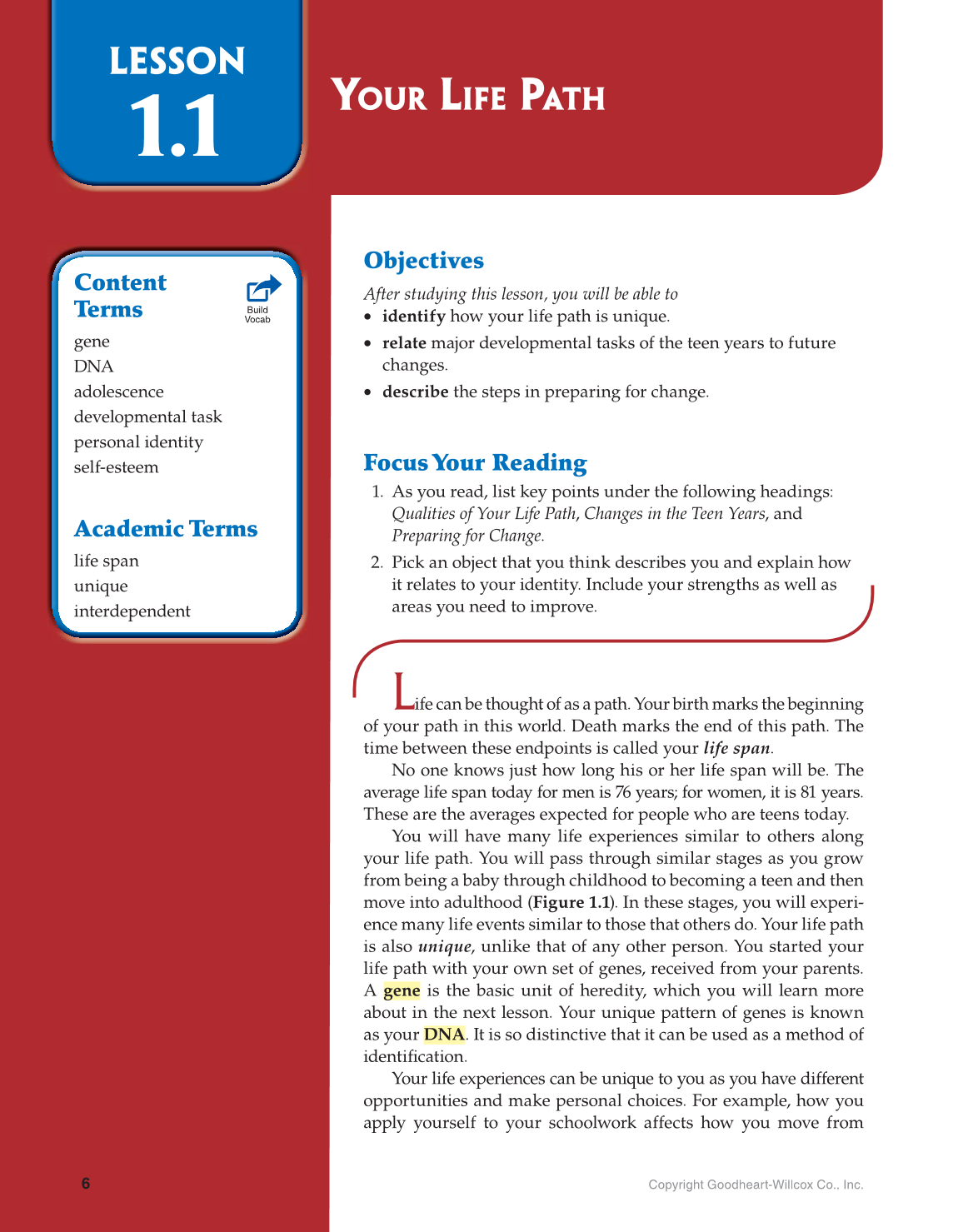6
LESSON
1.1
Y
OUR
LIFE PATH
Content
Terms
gene
DNA
adolescence
developmental task
personal identity
self-esteem
Academic Terms
life span
unique
interdependent
Build
Vocab
Objectives
After studying this lesson, you will be able to
• identify how your life path is unique.
• relate major developmental tasks of the teen years to future
changes.
• describe the steps in preparing for change.
Focus Your Reading
1. As you read, list key points under the following headings:
Qualities of Your Life Path, Changes in the Teen Years, and
Preparing for Change.
2. Pick an object that you think describes you and explain how
it relates to your identity. Include your strengths as well as
areas you need to improve.
Life
can be thought of as a path. Your birth marks the beginning
of your path in this world. Death marks the end of this path. The
time between these endpoints is called your life span.
No one knows just how long his or her life span will be. The
average life span today for men is 76 years; for women, it is 81 years.
These are the averages expected for people who are teens today.
You will have many life experiences similar to others along
your life path. You will pass through similar stages as you grow
from being a baby through childhood to becoming a teen and then
move into adulthood (Figure 1.1). In these stages, you will experi-
ence many life events similar to those that others do. Your life path
is also unique, unlike that of any other person. You started your
life path with your own set of genes, received from your parents.
A gene is the basic unit of heredity, which you will learn more
about in the next lesson. Your unique pattern of genes is known
as your DNA. It is so distinctive that it can be used as a method of
identifi cation.
Your life experiences can be unique to you as you have different
opportunities and make personal choices. For example, how you
apply yourself to your schoolwork affects how you move from
Copyright Goodheart-Willcox Co., Inc.
